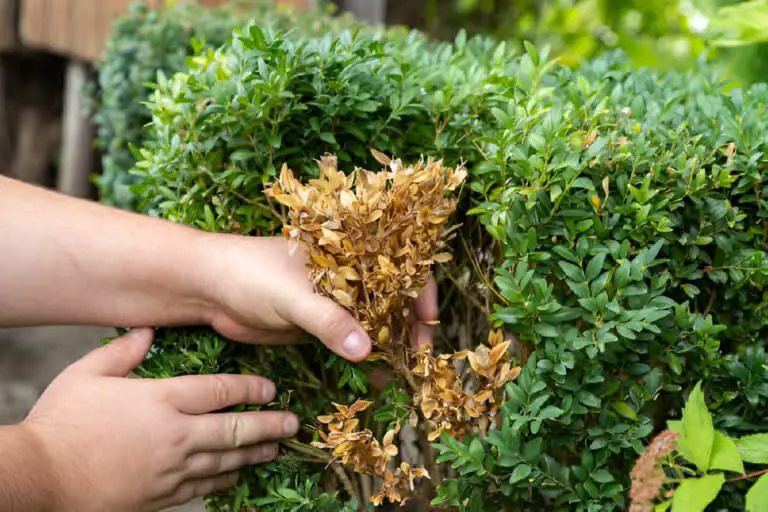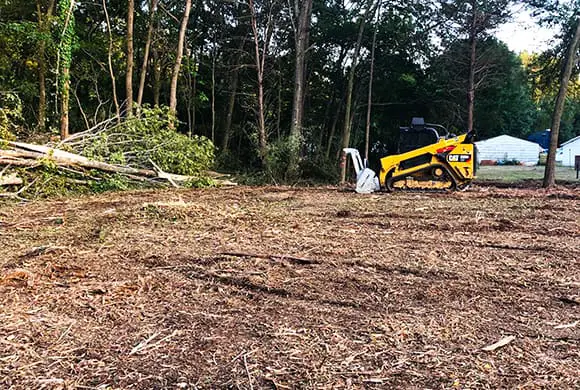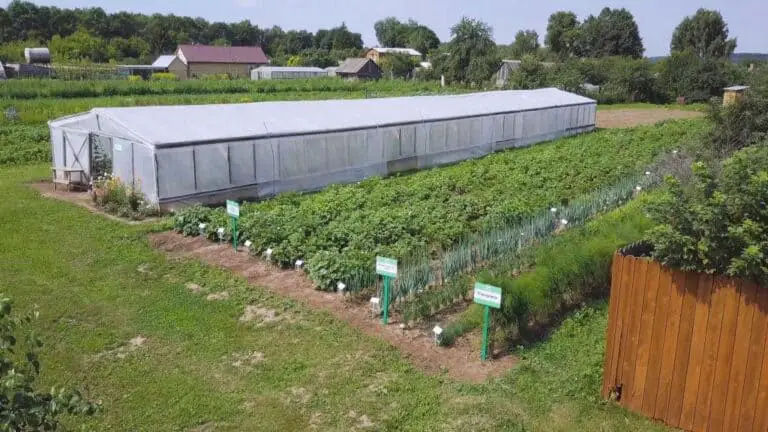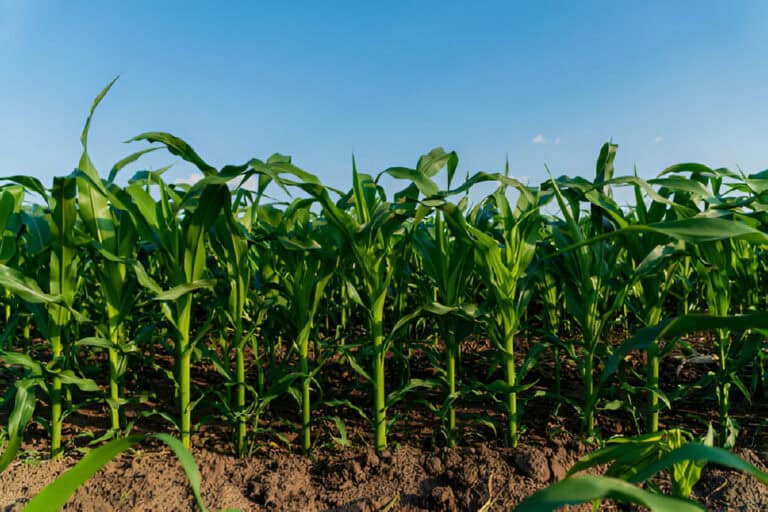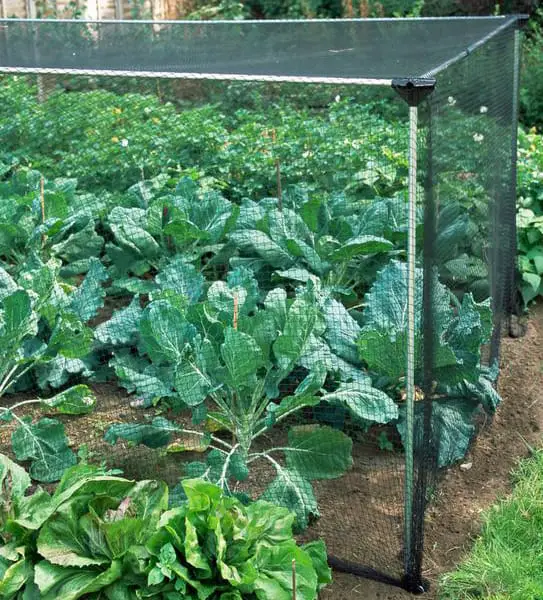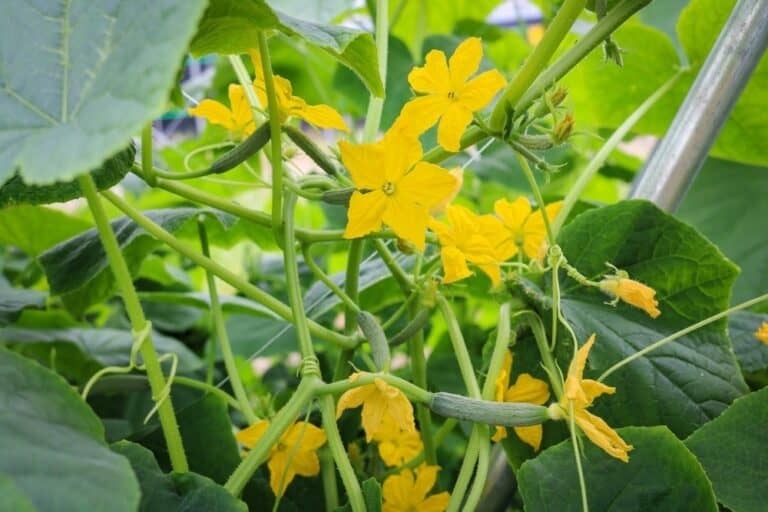Are Apricots Self Pollinating? How to Hand-Pollinate Apricots Plant

When you think of apricots, those golden summer treats, you probably picture orchards full of ripe, juicy fruit. However, this is a question that many apricot growers, both new and experienced, often have: Are apricots self-pollinating?
Most apricots are self-fertile and thus self-polinate and do not require pollinators. Some varieties are not self-fertile and require a pollination partner to increase the size and quality of the harvest.
Join me on a journey into the heart of apricot pollination, where the golden promise of a bountiful harvest unfolds. In this quest for gardening knowledge, we will look into the complicated world of apricot reproduction. How self-pollination works and how hand-pollination turns the orchard keeper into a conductor of nature’s orchestra will be explained.
So, grab a metaphorical magnifying glass and let’s delve into the delicate realm of apricot blossoms, where each petal holds the key to a sweet and succulent future. Welcome to the orchard, where the mysteries of apricots come to life!
Are Apricots Self Pollinating?
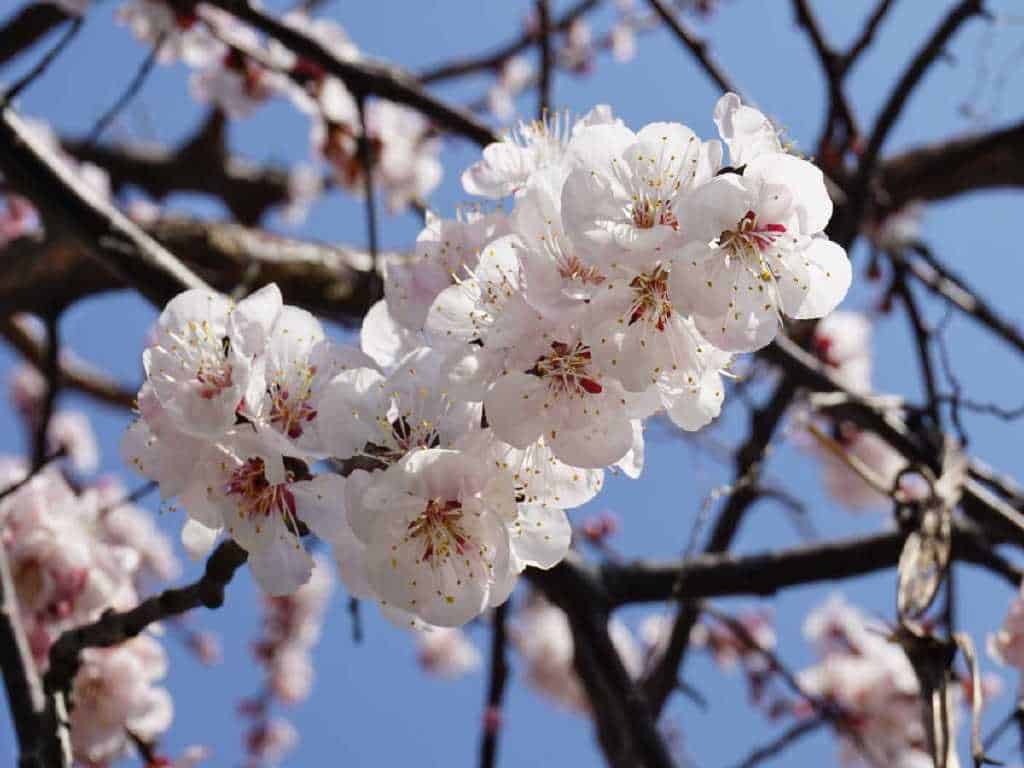
Apricots are indeed self-pollinating, with many varieties capable of setting fruit without the need for a different apricot tree nearby. However, while apricots possess this ability, they can certainly benefit from some helping hands—literally.
In areas with little insect activity or bad weather, hand-pollination ensures a plentiful harvest. By transferring pollen from one blossom to another using a small brush or cotton swab, gardeners can enhance the pollination process and maximize fruit production.
In addition to hand-pollination, strategic planting and care can boost apricot yield. Selecting compatible varieties that bloom at the same time can increase cross-pollination and lead to larger and more consistent crops.
Providing proper nutrition, irrigation, and pest and disease protection will also improve tree health and fruit production. With these methods in mind, both novice and experienced orchardists alike can savor the rewards of cultivating thriving apricot trees.
Cross-Pollination vs. Self-Pollination in Apricots
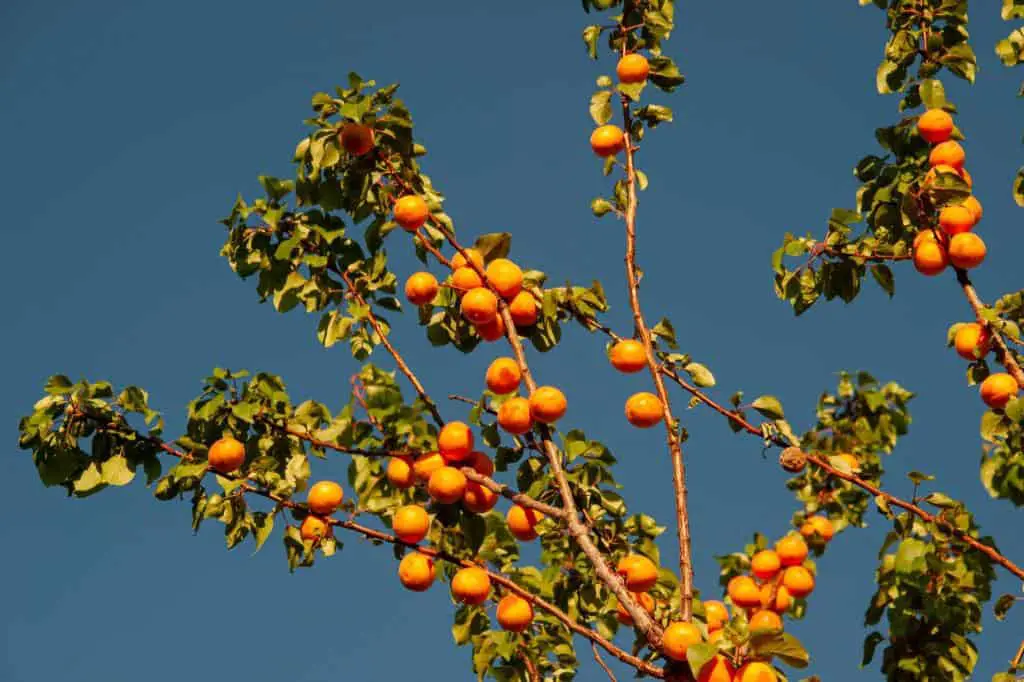
Apricot trees, like many fruit-bearing plants, have developed different mechanisms to ensure successful pollination and subsequent fruit production. Apricot reproduction relies on cross-pollination and self-pollination, which affect fruit production. Understanding their nuances is crucial for orchard success.
Cross-Pollination:
One such mechanism is cross-pollination, which involves the transfer of pollen from one apricot tree to another with the help of external agents such as wind or insects. Cross-pollination not only fosters genetic diversity but also increases the chance of fertilization by providing a wider range of compatible pollen sources.
A variety of pollinators, including bees and other insects, play a central role in this intricate pollination process, transferring pollen as they move from bloom to bloom. The result is often a bounty of well-formed, high-quality apricots.
Self-Pollination:
Contrastingly, self-pollination happens within the same apricot tree. While this process may seem efficient, it carries potential downsides. Limited genetic diversity can lead to weaker offspring and decreased adaptability. However, certain apricot varieties have evolved mechanisms to ensure the success of self-pollination, striking a balance in the complex world of orchard dynamics.
To facilitate self-pollination in apricots, gardeners can employ various techniques to promote effective pollination within individual trees. Hand pollination is a popular method where individuals manually transfer pollen grains from one flower’s stamen (the male reproductive organ) to another flower’s stigma (the female reproductive organ).
This process mimics natural cross-pollinators and helps overcome limitations caused by unfavorable environmental conditions or insufficient insect activity.
Why You Need to Hand-Pollinate Apricots Plant
Apricots, like many fruit trees, have a unique way of reproducing. While some plants rely solely on the wind or insects for pollination, apricots have the potential for self-pollination. This means that, under the right conditions, an apricot tree can fertilize its own blossoms, leading to the development of fruit without external assistance.
Despite self-pollination, apricot trees sometimes benefit from human intervention. One key reason why hand-pollination is vital for apricot plants is their relatively low rate of self-fertility. Factors such as limited pollinator activity, adverse weather conditions, or a lack of nearby apricot trees can hinder natural pollination. In such cases, the orchard keeper can step in to ensure the reproductive success of their apricot trees.
Factors Affecting Apricot Pollination Success
To successfully grow apricot plants, certain factors greatly affect how well pollination happens. Environmental factors such as temperature and humidity play a significant role in pollination success, influencing the activity of pollinators and the viability of pollen. Additionally, the presence of suitable pollinators like bees, butterflies, or birds is essential for effective pollination. Pollination success also depends on compatible pollen from other apricot trees.
Moreover, the timing and synchrony of flowering among different apricot varieties affect their ability to cross-pollinate and set fruit. Understanding these factors is essential for growers looking to maximize their apricot yield.
To improve fruit production, growers can hand-pollinate plants when conditions are not ideal. This increases the chances of successful harvests.
How to Hand-Pollinate Apricots
Hand-pollination might sound like a delicate things and so much manual work, but fear not—it’s a straightforward process that you can master. Here’s a step-by-step guide to hand-pollinating your apricot trees:
Materials Needed:
- Fine paintbrush, cotton swab, or feather.
- Time, patience, and a keen eye for blossoms
Procedure Guide (Step-by-Step):
- Select the Right Time: Choose a day when the weather is dry and calm. Avoid windy conditions, as this can disrupt the delicate pollination process.
- Identify Blossoms: Examine your apricot tree for blossoms. These are the delicate, often fragrant flowers that will eventually transform into delicious apricots.
- Collect Pollen: Gently rub the paintbrush or cotton swab against the stamen of a fully opened blossom to collect pollen.
- Transfer Pollen: Carefully transfer the collected pollen to the stigma of another blossom. The stigma is the female reproductive part of the flower.
- Repeat the Process: Continue this process until you’ve pollinated all the Apricots blossoms you wish to. Remember, patience is key!
| Related: Are Persimmons Self Pollinating? |
Tips for Successful Hand-Pollination
The act of hand-pollination involves manually transferring pollen from the stamen of one flower to the stigma of another, facilitating fertilization and fruit formation. Below are some proven tips to successfully manually hand-pollinate your apricots.
- Selective flowers: Choose flowers that are fully open and at their peak bloom. These flowers will usually have receptive stigmas covered in slightly sticky pollen.
- Timing Matters: Aim for late morning or early afternoon when the blossoms are fully open and ready for pollination. Apricot trees typically bloom early in the spring, so it’s crucial to monitor the weather and wait for a warm, calm day to perform hand-pollination.
- Be Gentle: Handle the blossoms and the pollen with care to avoid damaging delicate reproductive structures.
- Repeat as Necessary: Don’t be afraid to revisit your apricot trees for multiple hand-pollination sessions, especially if weather conditions are less than ideal.
- Variety of Pollinators: Consider planting a variety of pollinator-friendly plants in your garden to attract bees and other beneficial insects. Additionally, providing a diverse landscape with various flowering plants can help ensure a steady supply of pollen throughout the growing season.
Alternative Pollination Methods for Apricots
Apricots, with their succulent taste and velvety skin, are a favorite among fruit enthusiasts. Ensuring a robust pollination process is essential for a bountiful harvest. Let’s explore other ways to help apricots grow better instead of only using bees.
1. Vibrational Pollination:
Harnessing the power of vibrations, this method stimulates pollen release and transfer. Using specialized devices, such as vibrating wands, introduces controlled vibrations to the blossoms, encouraging efficient pollination.
2. Blower-Assisted Pollination:
Utilizing blowers to disperse pollen within the orchard enhances the chances of successful pollination. This method is effective in large orchards where manual pollination may be impractical.
3. Insect Hotels:
Creating insect-friendly environments, such as insect hotels, attracts pollinators like solitary bees. These structures provide nesting sites for solitary bees, supporting natural pollination.
Table: Pros and Cons of Alternative Pollination Methods
| Method | Pros | Cons |
| Vibrational Pollination | Efficient, stimulates pollen release | Requires specialized equipment |
| Blower-Assisted Pollination | Practical for large orchards | Dependency on machinery |
| Insect Hotels | Supports natural pollination | Takes time to attract pollinators |
Incorporating alternative pollination methods provides flexibility and resilience to external factors affecting traditional pollination. Whether you’re a backyard gardener or managing a vast orchard, exploring these methods ensures apricot trees reach their full fruit-bearing potential.
Conclusion
In conclusion, understanding the intricate world of apricot pollination is pivotal for a thriving orchard. The question, “Are apricots self-pollinating?” opens a gateway to exploring the delicate dance between nature and cultivation. We’ve unraveled the mysteries of self-pollination in apricots, shedding light on the nuanced realm of apricot tree reproduction.
From the natural beauty of self-pollination to the art of hand-pollination, our journey through apricot pollination methods has equipped both novice gardeners and seasoned orchard keepers. The balance between cross-pollination and self-pollination in apricots emerges as a crucial factor for a fruitful harvest.
As we’ve navigated the orchards, we’ve discovered pollination strategies for apricot orchards that go beyond the conventional. Whether it’s the hands-on approach of hand-pollination or the vibrational techniques, each method plays a role in ensuring the continuation of the apricot lifecycle.
FAQs
Are all apricot trees self-pollinating?
No, not all apricot trees are self-pollinating. Some varieties are, while others require cross-pollination for optimal fruit production. It’s crucial to know the specific characteristics of the apricot tree you have to determine its pollination needs.
When should I hand-pollinate my apricot tree?
Hand-pollination is typically done when natural pollination is insufficient. This can be due to factors like poor weather conditions or a lack of pollinators. The best time for hand-pollination is during the flowering period, when the blossoms are open and receptive.
Can you hand-pollinate apricots with any pollen?
Ideally, it’s recommended to use pollen from the same apricot variety for hand-pollination to ensure compatibility. However, in some cases, compatible varieties within the same species can also be used. Ensure that the pollen used is viable and collected during the flowering period.
How can I encourage self-pollination in my apricot tree?
To promote self-pollination, consider planting self-pollinating apricot varieties. Additionally, ensure proper spacing between trees to allow for adequate airflow, facilitating the transfer of pollen within the same tree.
Are there specific pollination strategies for enhancing apricot fruit quality?
Yes, employing diverse pollination strategies, including introducing compatible cross-pollinators, can enhance fruit quality in apricot orchards. The presence of varied pollinators contributes to a more robust reproductive process.
Can apricot trees change from being self-pollinating to cross-pollinating?
Apricot trees typically have a fixed pollination method based on their variety. However, certain environmental factors and conditions can influence the degree of self-pollination, highlighting the dynamic nature of this process.

